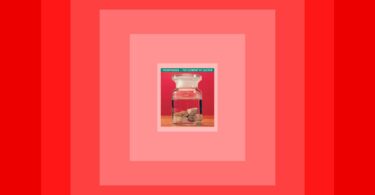The word ‘blunderbuss’ is described by the online Oxford Dictionary as: 1) a short large-bored gun firing balls or slugs, and 2) an action or way of doing something regarded as lacking in subtlety and precision.
Blunderbussing is a term to be applied to those misled few who prescribe combination (homeopathic) remedies, as this method is totally unprofessional – and definitely anathema – for anyone who has been trained correctly in homeopathy. Inexpert prescribing of this kind certainly lacks subtlety and precision. And blasting an ill patient with a variety of different remedies and potencies at any one time is as unsubtle and imprecise as firing a loaded blunderbuss.
There is a growing trend in the international homeopathic community to not only manufacture combination remedies, but also for homeopaths to recommend and prescribe combination remedies. Whilst the public may be forgiven for purchasing combination over-the-counter remediesfrom various therapeutic persuasions for their own personal use, it is damaging to homeopathy’s reputation for specialist homeopathic pharmacies to pander to the public’s ignorance by offering these ‘quick-fix’ productsandfor poorly-trained homeopaths to resort to this discreditable method of prescribing for various reasons like business expansion, awardsor monetary gain.
It has been reported that in one particular combination remedy (in this case, there were four remedies combined in one tablet)certainly one remedy must have acted beneficially i.e. homeopathically, according to the patient’s report;however,the question of what the other three remedies were doing in the background never arose. What if the beneficial remedy, nestled amongst the other three, needed repeating? The homeopath did not know which remedy had been the active remedy and thus couldn’t repeat the combination remedy with confidence. And if the active remedy had been of a low potency, say 6c, it could easily have been masked by one or more of the other remedies of a higher 200c potency.What began as a simple case needing one simple acute remedy ended up a confused case, impossible to help even for the most experienced homeopath – and sent a message of failure of homeopathy to the allopathic medical profession. Even allopathic doctors are warned about over-prescribing.
Another crucial point that must be asked is whether the prescriber of the combination remedy had taken into account the level of health of the patient. A patient who has a very low level of health may suffer a lot if they are given a combination remedy consisting of two or more different remedies with differing potencies at any one time. This suffering would not do the reputation of homeopathy any good. And someone who is on a middle to low level of health may find, after repeated prescriptions of combination remedies that their level of health is deteriorating; sure, their presenting symptoms may have gone but these earliersymptoms couldwell have been suppressed, and chronic ill health is now their lot.To understand this point fully, serious homeopaths who sincerely want to help their patients are advised to read Levels of Health by Prof. George Vithoulkas https://www.vithoulkas.com/learning-tools/books-gv/levels-health
In the end the misuse of homeopathy by prescribing combination homeopathic remedies, quick and easy though this system may seem at first,will only lead to homeopathy being further denounced and discredited as disappointed patients end up in doctor’s surgeries.
With homeopathic remedies prescribed in the traditional manner, only one single remedy is given at any one time. This is because, with the stimulus of one single dose of energy, it is really only necessary to give one homeopathic pill or drop at a time. This is more than enough to encourage the vital force to start healing. Much like rolling a ball … once started it gathers momentum. And because homeopathic remedies are usually proven singly at a time, they are usually prescribed singly at a time.
To repeat, if two or more different remedies are taken at the same time, or an unproven combination remedy is taken, a classical homeopath cannot ascertain which of the remedies has been the active ingredient – either positively or negatively (some remedies antidote one another). Though there are exceptions: for various medicinal reasons some remedies have been combined before dilution and succussion – however these remedies have gone through the potentisation procedure simultaneously from their material beginnings and have therefore been proven as one remedy.
In a proving, a single homeopathic remedy usually produces a plethora of symptoms on the mental, emotional and physical levels. This means a single remedy can also re-balance a sick person’s whole dynamic system including symptoms on their mental, emotional and physical levels. Even if the symptoms of the ill person are localized, in effect it is the person’s whole system that has lost equilibrium and is trying to regulate itself through symptoms. So, as a rule, not only physical but also mental and emotional symptoms are taken into consideration when prescribing: they are all evidence of a unified effort to resolve an inner disturbance.
Thus in prescribing homeopathic remedies only one single remedy is taken at a time, followed by observation of its effects on the person’s energy. By waiting and observing you will see the single simillimum remedy instigate change.Combination remedies cannot be called homeopathy for there is no way to accurately match the combined remedies’ proven symptoms with the patient’s presenting symptoms.Conversely, in noway can one person produce the combined symptoms of a multitude of remedies at the same strength and at the same time to equal the (unidentified) dynamics of the combination remedy. Combination remedy prescribing is not homeopathy and is merely hit and miss buckshot – blunderbussing. The actions andtraditional ways of correctly prescribingclassical homeopathyare subtle and precisefor the homeopath to see effective cures.
“Do small things with great love.”
Blessed Teresa of Kolkata
Image of 19th Century Turkish Flintlock Blunderbuss Pistol / Carbine: Heritage Auctions, Inc. (US) HA.com https://dyn1.heritagestatic.com/lf?set=path%5B1%2F3%2F3%2F8%2F2%2F13382552%5D%2Csizedata%5B850x600%5D&call=url%5Bfile%3Aproduct.chain%5D








DEAR DR,
CLASSICAL HOMEOPATHY IS VERY GOOD BUT NOW A DAYS IT IS NOT CONSIDERED AS THE ONLY ONE TO BE USED IN ALL CASES. MOST OF THE QUALIFIED HOMEOPATHS AFTER PASSING OUT FROM THE COLLEGES ARE GENERALLY USING ONE REMEDY AS WELL AS COMBINATIONS. TT IS BELIEVED THAT COBINATIONS ARE PREPARED AFTER GREAT RESEARCH FOR EXAMPLE RECKEWEG COMBINATIONS. MORE OVER THE PATIENTS DO NOT COOPERATE IN GIVING FULL HISTORY OF THE CASE. HENCE COMBINATIONS ARE USED.
THANKS